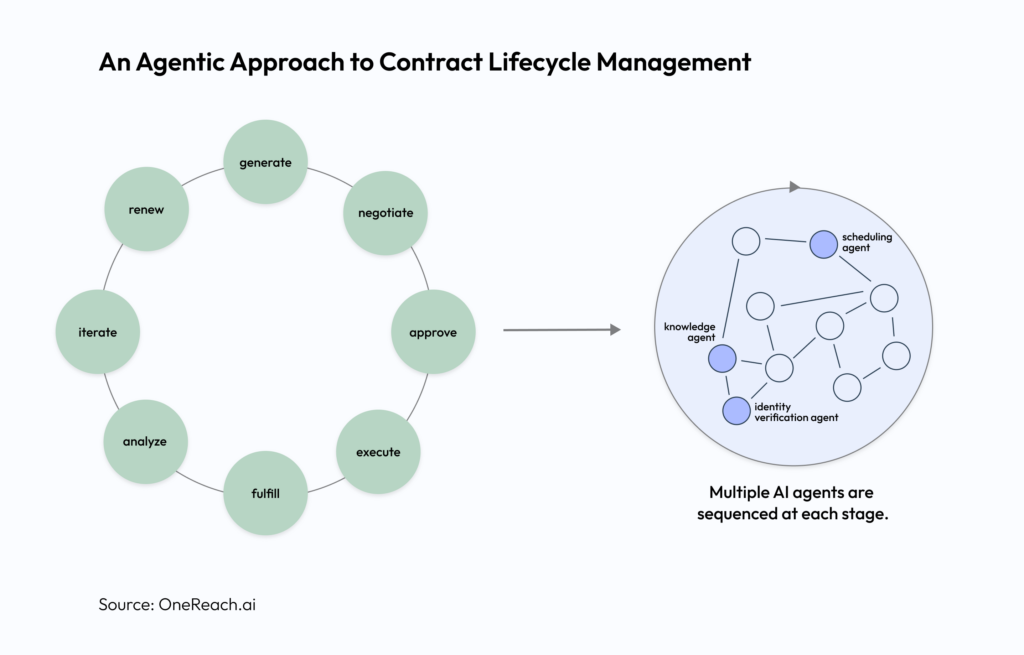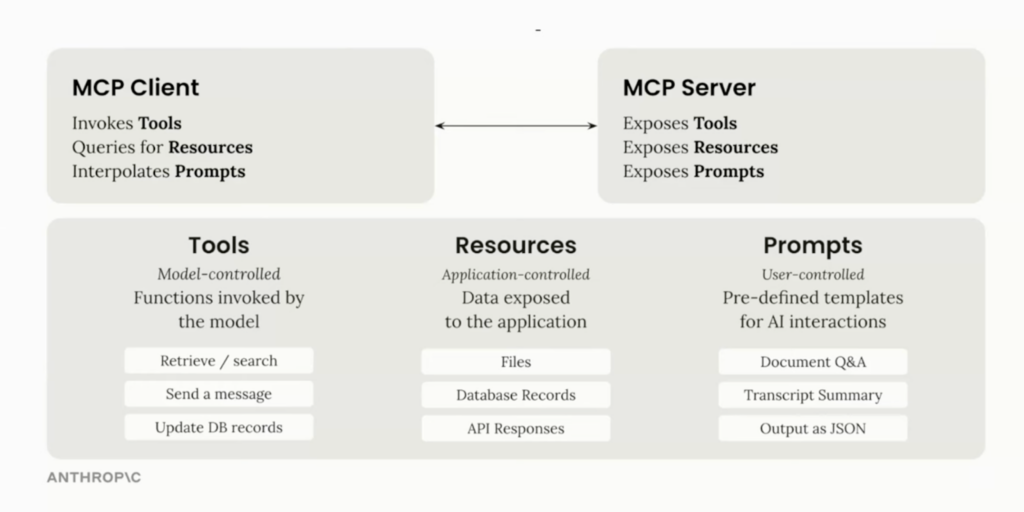When you start thinking about Agentic AI in the right way, you begin to see that it’s not a piece of technology to be wielded; it’s part of a business strategy that sequences various technologies to automate tasks and processes in ways that surpass what humans alone are capable of. This post debunks the top five common myths about Agentic AI that can hold organizations back in a moment when they absolutely need to surge ahead.
Starting with the misconception that Agentic AI is similar to the ways we’ve been building and experiencing software. Organizations also often feel pressure to start with big audacious buildouts, when starting small on internal use cases can forge scalable growth. It’s also important to identify use cases for automation that are truly high-value and find ways to orchestrate multi-agent AI systems to complete objectives dynamically, rather than following predefined routes. All of these activities require an Agentic AI Automation and Orchestration Platform that is as powerful as it is flexible.
Myth #1: Agentic AI is Software as Usual
With so many apps and SaaS solutions quickly tacking large language models (LLMs) onto their existing user interfaces (UIs), it’s tempting to want to believe that Agentic AI can simply be added to traditional software. In reality, the successful implementation of Agentic AI requires an entirely different approach to software creation.
The linear, staggered waterfall approach to software creation has sprung countless leaks over the years, and applying it within the framework of designing Agentic solutions is a surefire way to drown. Rather than spending months guessing what users want and initiating a laborious and rigid buildout around perceived needs, Agentic AI begins with building. AI agents are quickly propped up around a use case using low- and no-code building tools. The solution is tested and iterated on right away, with multiple iteration cycles taking place over the course of a single day.
Another key distinction is that Agentic AI works around objectives, rather than following predefined routes. In that sense the work of creating and evolving AI agents is a bit like the process pharmaceutical companies use when developing a new drug. A new medication that’s being investigated as a cure for gout might turn out to be a promising hair growth solution. These kinds of high-value surprises are uncovered through trial and error, fast iteration, and testing.
When it comes to Agentic AI vs chatbot capabilities, traditional approaches to conversational AI fall perilously short. In the not too distant past, chatbots used tools like natural language processing (NLP) to understand user requests and automate responses. With the advent of generative tools like LLMs, chatbots are better at disambiguating user requests and can deliver more dynamic responses, but they lack agency. AI agents use LLMs to interact with users and then communicate with other agents, knowledge bases, and legacy software to do real work. Beware of bolt-on solutions calling themselves AI agents. They are chatbots in disguise.
Learn more about how Agentic AI has surged past Robotic Process Automation (RPA)
Download WhitepaperMyth #2: It’s Imperative to Start Big
In order to get moving with Agentic AI, most organizations don’t need a large-scale, public-facing deployment. The key is to think big and start small. It’s often more effective to begin within your organization, automating internal tasks with help from the people who understand them best. This allows orgs to get a handle on sequencing technology in ways that are more efficient and rewarding what humans are able to on their own.
Stating internally allows orgs to form the groundwork for an ecosystem of Agentic AI that can grow to include customers once they’ve figured out how to optimize Agentic experiences. Starting small and internally requires more than just giving teams access to a sanctioned LLM. At a minimum there should be a strategy in place for connecting AI agents to some sort of knowledge management system, such as retrieval-augmented generation (RAG).
In an example, a global fortune 50 company partnered with OneReach.ai to create a multi-agent solution that served employees by automating basic tasks, like answering common questions, supporting the onboarding process, resetting passwords across multiple systems, and handling device service requests. This multi-agent system reduced onboarding task completion from 6 weeks to 1 week, reduced ticket resolution times, and cut inbound calls by 35%
And lowered CTS (cost to serve) by 40%. By reducing the workload of human agents in their contact centers, the enterprise was able to increase productivity, and boost their CSAT (customer satisfaction) score to 83%.
Myth #3: Operations are Improved by Automating Existing Workflows
The first move organizations often make when developing use cases for Agentic AI is to try and automate the workflows and processes that humans are already using. While this approach can often get the ball rolling, the real value comes with creating automations that surpass what humans alone are capable of.
For example, someone placing a call to the IRS (Internal Revenue Service) to follow up on a letter they received in the mail usually encounters a fragmented approach to automation that lumbers along in well-worn ruts. The first hurdle is figuring out which of the unintelligible clusters of voice-automated options most closely applies to their situation. They might repeat that process a few more times as they move through murky layers of the IRS phone tree, unsure if they’re headed to the right department and expecting to wait on hold for hours to find out.
What if, instead:
- The IRS greeted callers with an AI agent that could verify their personal information while simultaneously cross-referencing recent activity.
- The AI agent could infer that the taxpayer is calling about a letter that was sent last week.
The AI agent sees that a payment was received after the letter was sent. - The system confirms the reason for the call and relays that information, providing a confirmation number.
- The user ends the call (fully satisfied) in under five minutes.
Most organizations are teeming with hobbled processes that humans set up to work around disparate systems. Rather than automating those workflows, savvy business and IT leaders are looking for better ways to complete the objectives buried at the center of the mess.
As Robb Wilson, OneReach.ai CEO and founder, says in his bestselling book on Agentic AI, Age of Invisible Machines, “not only can Agentic AI running behind the scenes in an organization handily obscure the mess of systems (and graphical UIs), it also binds your ecosystem by standardizing communications, creating a feedback loop that can evolve automations for all your users — customers and employees.” [1]
Want to explore what orchestrated AI agents look like for an enterprise?
Book a DemoMyth #4: All it Takes is Some AI Agents
The hype around AI agents often obscures a fundamental truth about what they really are. “AI agents” are not a distinct kind of technology. Rather, they are part of a broader approach for using LLMs as a conversational interface. LLMs have made it far easier for users to initiate action with conversational prompts and for agents to either execute existing code or write their own code. These actions happen within a defined scope, ostensibly to both protect the user and indemnify the organization, but also to create something more guided and specific than the “ask me anything” experience of using something like ChatGPT.
Agents with real agency will have an objective, and they will either complete their objective or look for another agent to hand the objective off to (either if it can’t complete it or after it completes it). It can also hand off to a human agent. To reiterate the point from earlier, this requires more than bolting AI onto existing software. Agentic AI won’t thrive in any single tech provider’s black box. The goal of Agentic AI is not to accumulate separate agents for individual tasks, but to orchestrate multiple AI agents to collaborate together around objectives.
Looking at the example of Contract Lifecycle Management (CLM), AI Agent orchestration begins by examining each phase in a contract lifecycle and thinking through its component steps. If the negotiation process is happening asynchronously, for example, an AI agent might be used to notify parties on both sides when terms have been revised or updates have been requested. Using a design pattern like “nudge,” the agent can keep negotiations moving forward by giving gentle reminders when people need to make decisions. Another AI agent might maintain a change log that’s available to all parties with the ability to create custom views of updates and requests based on user requests (i.e., “show me all of the changes that the client has requested that will require approval from our partners”). As figure 1 shows, there are multiple agents collaborating at each step in the lifecycle.
Figure 1: An Agentic Approach to CLM

Agentic AI can streamline the approval process by handling things like scheduling, identity verification, and knowledge management. Additionally, the skills that individual agents specialize in, such as scheduling, identity verification, and knowledge management are not exclusive to any of the stages related to CLM. Scheduling, identity verification, and knowledge management are functions that have value across departments and processes within an organization. All of it, however, hinges on the orchestration of AI agents.
Discover what your organization can do with GSX
Platform CapabilitiesMyth #5: There is One Platform to Rule All AI Agents
To give AI agents actual agency requires an orchestration and automation platform that is open and flexible. Organizations need to be able to build AI agents quickly, using no- and low-code tools. They need those agents to communicate with their legacy software systems. AI agents also need to be able to share information with other AI agents, and they all need to be connected to secure knowledge bases that align with the goals of their organization.
These are just the table stakes. To fully embrace Agentic AI, orgs need a technology ecosystem that can quickly integrate the best new technologies as they appear in the marketplace. The marketplace is already headed in this direction, as evidenced by the surge of interest in Model Context Protocol (MCP). Released by Anthropic last November, MCP makes it far easier for AI agents to access the systems where data lives. MCP servers exist in an open-source repository and Anthropic has shared pre-built servers for enterprise systems, such as Google Drive, Slack, and GitHub, Git, Postgres, and Puppeteer.
Figure 2: MCP Deep-Dive

Source: Anthropic
Sam Altman announced that OpenAI will support MCP across its products, and Google has also released their own Agent2Agent (A2A) protocol as a complement to MCP with support from 50+ partners, including Atlassian, Intuit, PayPal, Salesforce, ServiceNow, and Workday; and leading service providers, such as Accenture, BCG, Capgemini, Cognizant, Deloitte, McKinsey, and PwC.
Microsoft also announced that their Windows Subsystem for Linux (WSL) is now fully-open source, which they see as part of the “Agentic Web.” As part of the opening keynote at Microsoft Build 2025, their CTO Kevin Scott said, “You need agents to be able to take actions on your behalf … and they have to be plumbed up to the greater world. You need protocols, things like MCP and A2A … that will help connect in an open, reliable, and interoperable way.” [2] In this moment, organizations need to find platforms that can help them build an open framework for Agentic AI that allows them to grow freely alongside the marketplace.
OneReach.ai developed Generative Studio X (GSX) as an Agentic AI Orchestration Platform that allows organizations to simplify processes, streamline AI agent deployment, and enable seamless interaction with necessary tools and systems. It empowers organizations to model, implement, operate, monitor, and optimize their long-running processes. It’s not the only platform you’ll need, but it provides the framework and tools for building the foundational aspects of Agentic AI.
Sources:
[1] Robb Wilson and Josh Tyson, “Age of Invisible Machines”
[2] Microsoft Build 2025

